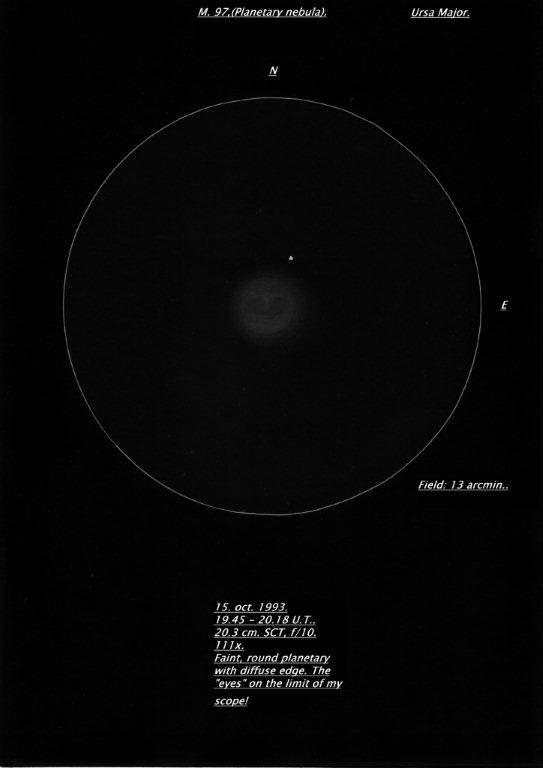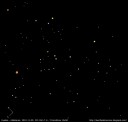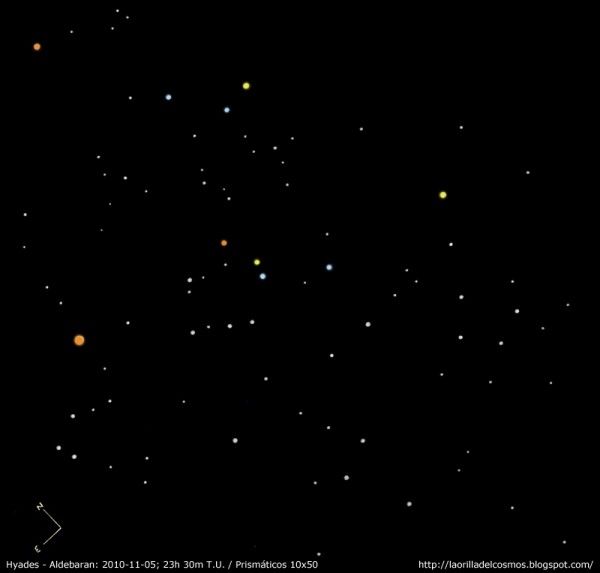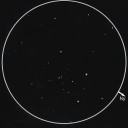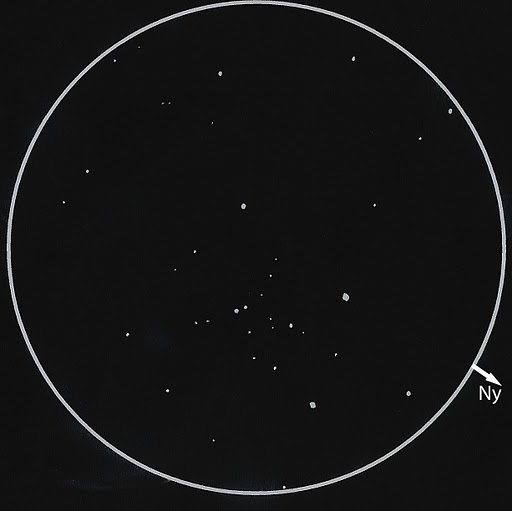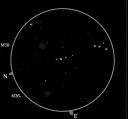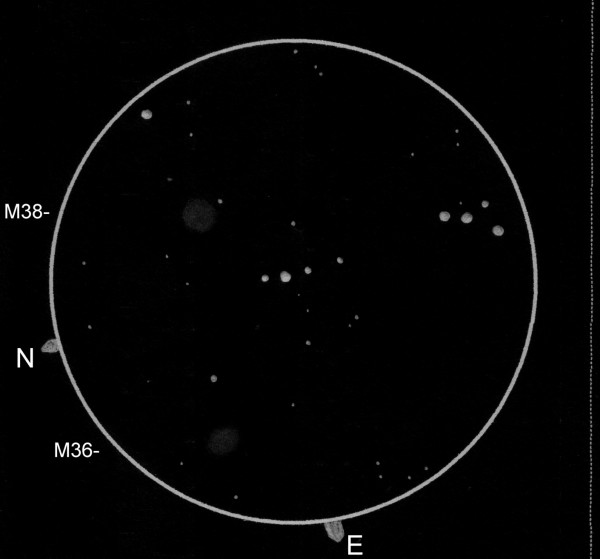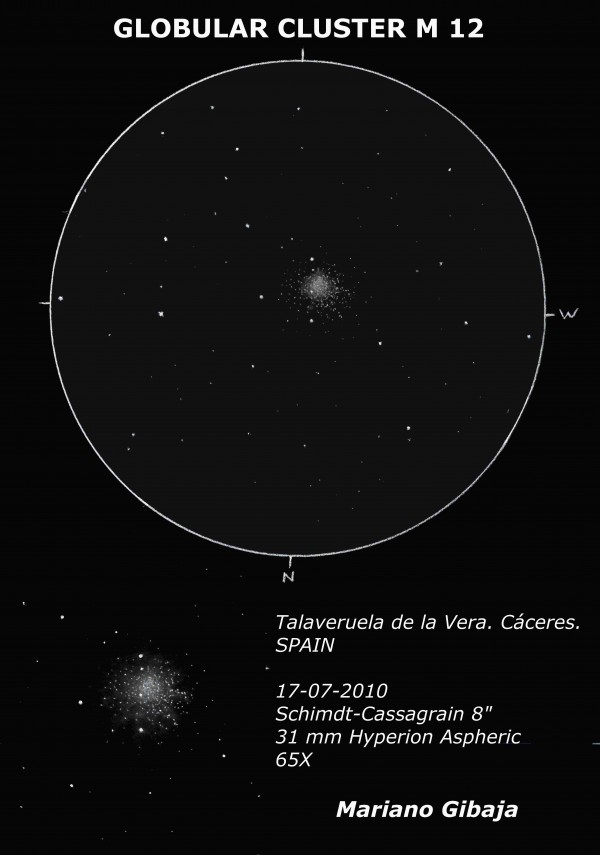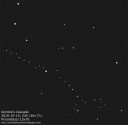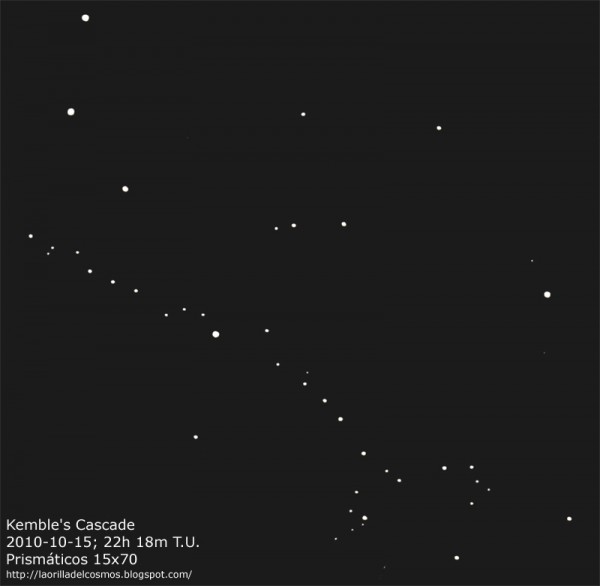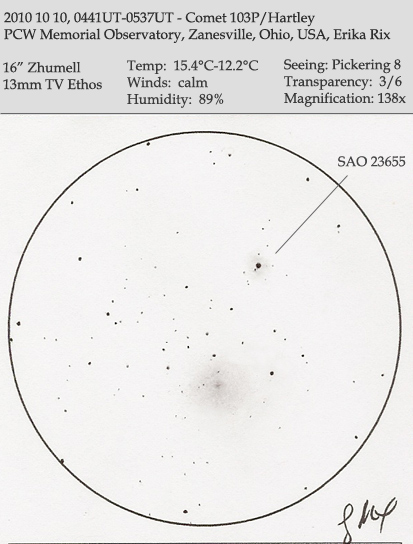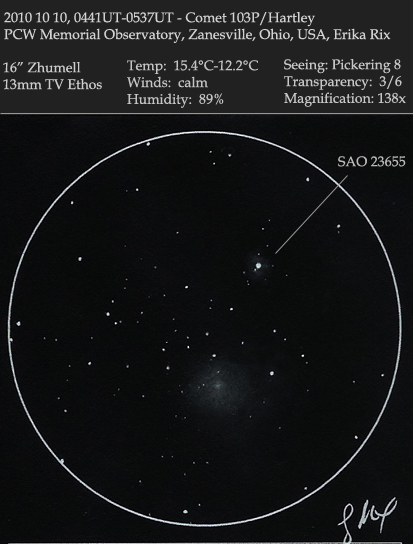
Object Name: Jupiter + Io + Ganymede + Callisto
Object Type: Planet
Location: Itajobi – SP – Brazil
Date: 04/10/10 – 00h30min U.T.
Media: 2B graphite mec. pencil on white paper, inverted and bright edited.
Instrument: dobsonian newtonian reflecting telescope
Diameter: 180mm (7.1″)
Focal Lenght: 1080mm (f/D = 6)
Eyepieces:
SP 32mm (34x)
Ortho 12.5mm (86x)
Plossl 10mm (108x)
SP 6mm (180x)
A three elements 2.5x Barlow was combined with all eyepieces, but yielded bad results.
Best images through Ortho 12.5mm and Plossl 10mm.
Planet position:
Az/Alt: 58º/58º
Planet mag.: -2,8
Comments:
It was a cloudy sunday night, it had rained for some days in a row, and it was my last hours on countryside. While I waited for the time to go to take the bus toward São Bernardo, my mother warned me: “The sky is clear now…” I grabbed my telescope and went downstairs, and there it was: a bright Jupiter rising over my neighbor’s house. I kept observing it for almost two hours, and I got some surprises. I wasn’t aware the giant planet had lost one of the equatorial stripes. I saw a bright spot, similar to the Red Spot, but in a different place and smaller. I decided to take some notes [after some researches, I think it’s the Oval BA]. Ten o’clock pm (local), it was time to take the bus. I ended my observation, a great brief night of observation.
Rodrigo Pasiani Costa
